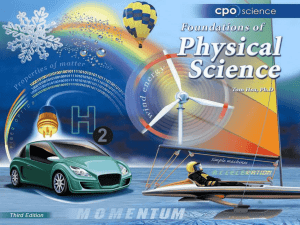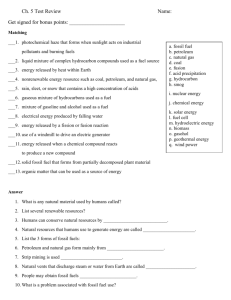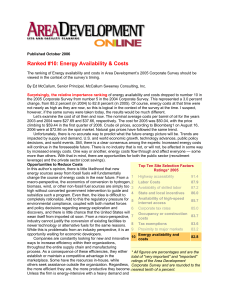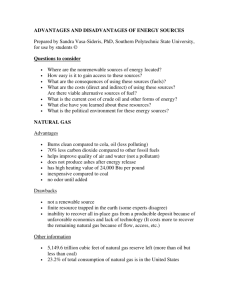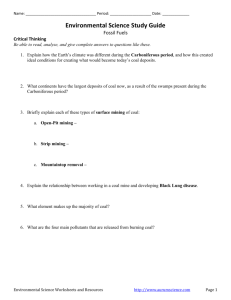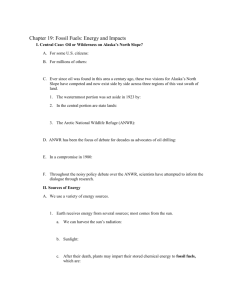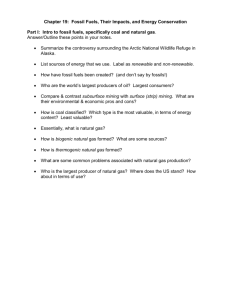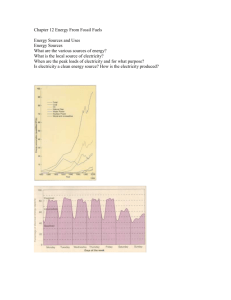Fossil Fuels and Conservation reading guide
advertisement
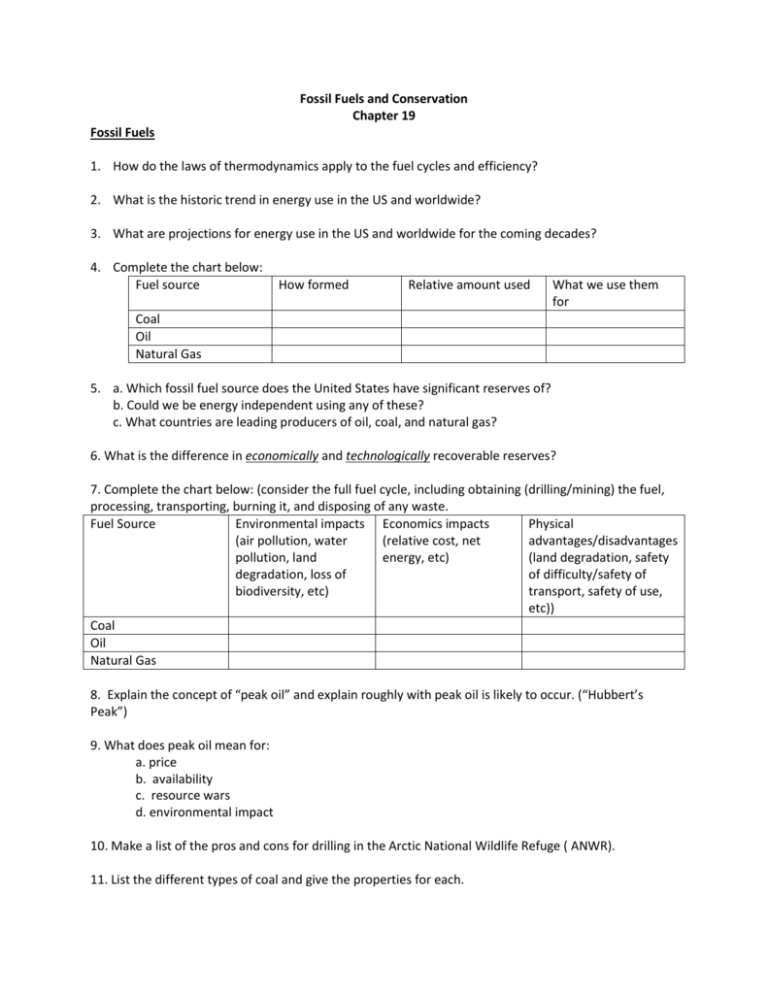
Fossil Fuels and Conservation Chapter 19 Fossil Fuels 1. How do the laws of thermodynamics apply to the fuel cycles and efficiency? 2. What is the historic trend in energy use in the US and worldwide? 3. What are projections for energy use in the US and worldwide for the coming decades? 4. Complete the chart below: Fuel source How formed Relative amount used What we use them for Coal Oil Natural Gas 5. a. Which fossil fuel source does the United States have significant reserves of? b. Could we be energy independent using any of these? c. What countries are leading producers of oil, coal, and natural gas? 6. What is the difference in economically and technologically recoverable reserves? 7. Complete the chart below: (consider the full fuel cycle, including obtaining (drilling/mining) the fuel, processing, transporting, burning it, and disposing of any waste. Fuel Source Environmental impacts Economics impacts Physical (air pollution, water (relative cost, net advantages/disadvantages pollution, land energy, etc) (land degradation, safety degradation, loss of of difficulty/safety of biodiversity, etc) transport, safety of use, etc)) Coal Oil Natural Gas 8. Explain the concept of “peak oil” and explain roughly with peak oil is likely to occur. (“Hubbert’s Peak”) 9. What does peak oil mean for: a. price b. availability c. resource wars d. environmental impact 10. Make a list of the pros and cons for drilling in the Arctic National Wildlife Refuge ( ANWR). 11. List the different types of coal and give the properties for each. 12. What is meant by the concept “net energy”? 13. a. How does a thermal electric power plant function? b. What is consistent whether the fuel is coal, oil, gas, or nuclear? 14. a. What is hydraulic fracturing? b. What benefits does hydraulic fracturing offer? c. What risk does it pose? (not much in the textbook but we will discuss this in class) 15. a. Is the use of oil shale and tar sands realistic in the next few years? Next few decades? b. What advantages do they offer over current fuels? c. What disadvantages do they offer over current fuels? 16. a. What doe “clean coal” mean? b. What is possible today? c. What is under development? d. Is it clean enough? 17. a. What is carbon capture (sequestration)? b. Why are we pouring money into it? c. How does it (might it) work? d. What are some difficulties? e. Should we pursue this? Energy Conservation 18. What is the difference between energy efficiency and conservation? 19. Explain the following federal energy conservation programs: a. CAFÉ standards b. EnergyStar 20. What other regulatory and economic tools could the government use to encourage energy conservation? 21. Name several key energy saving practices for: a. home b. transportation c. industry/commercial 22. Explain the concept of cogeneration? 23. What is meant by “energy intensity?” 25. What are hybrid vehicles?



